Abstract
Four issues in the use and interpretation of anthropometry are discussed at the level of the population and of the individual. The first issue is the index or indices of choice: weight-for-height versus height-for-age versus weight-for-age. The selection of an index or indices depends upon many factors, and no one index is completely adequate in all situations. Proposed criteria are provided to assess the severity of low anthropometry within populations. The second issue is the scale of the index: z-scores (or standard deviations) versus percentiles versus percent-of-median. z-Scores have several properties that make them superior to the other two scales. A third issue deals with limitations in the current growth reference; one of these is the disjunction between the growth curves at 2 years of age, resulting from the use of two different populations in the reference. It is important that this disjunction be recognized by researchers so that the anthropometric findings are interpreted correctly for this age range. Lastly, some issues to do with the collection of single versus multiple anthropometric measurements on children are discussed.
Full text
PDF

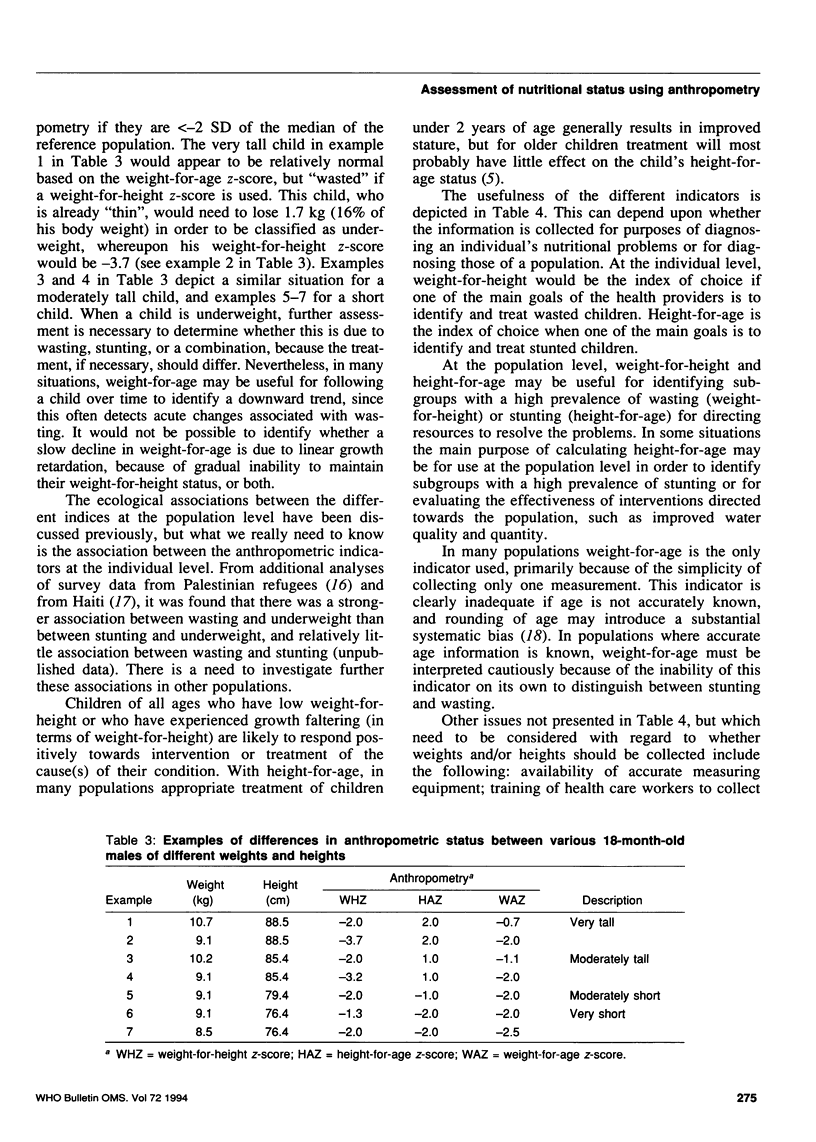
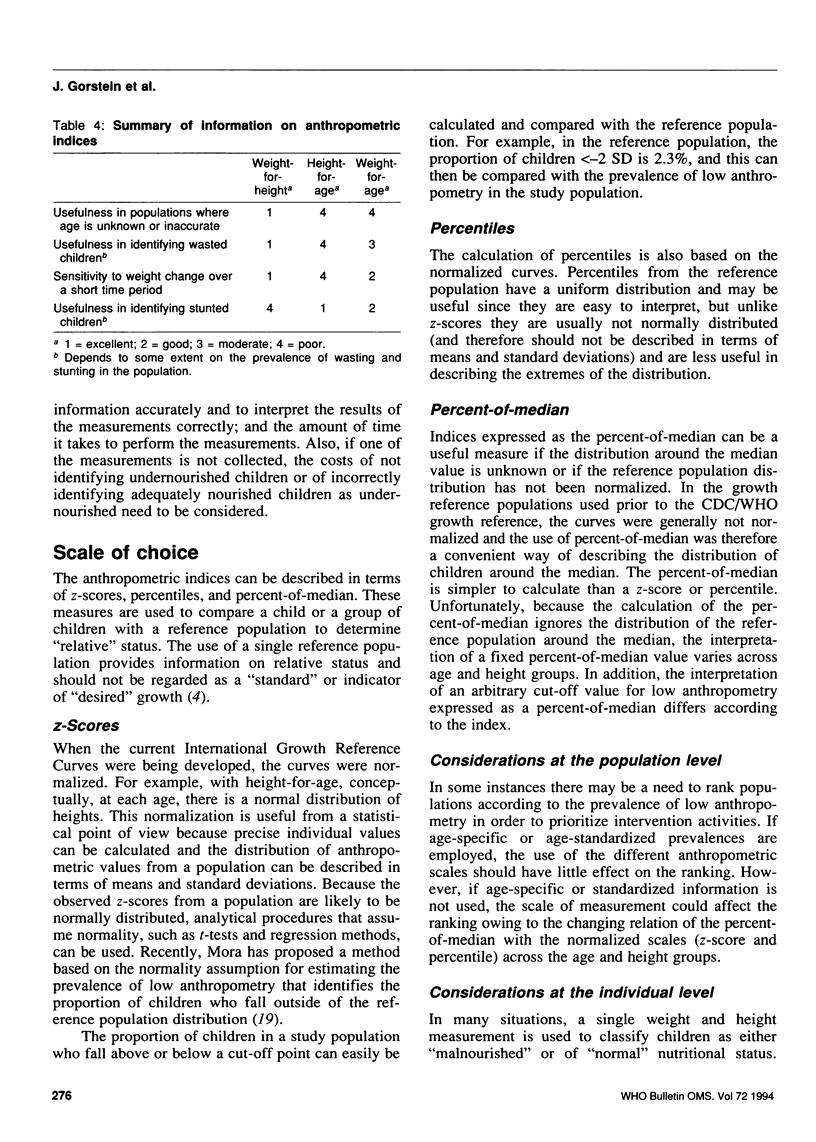

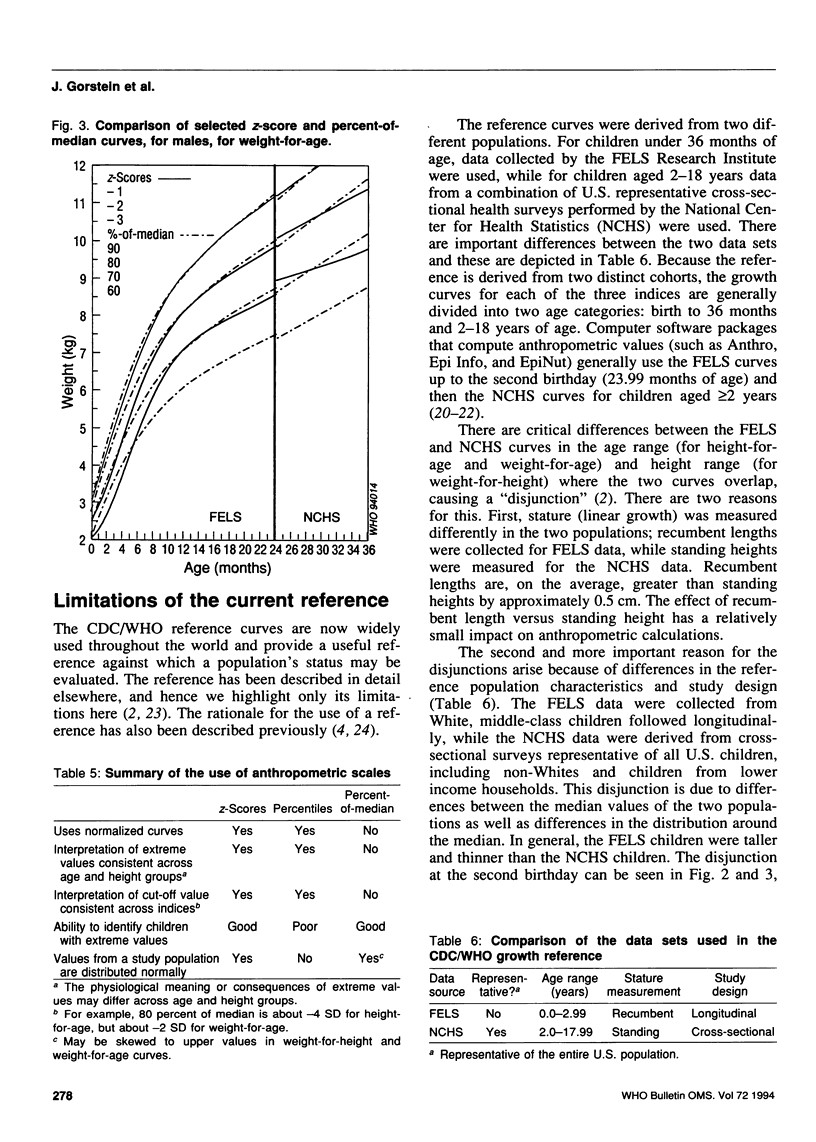
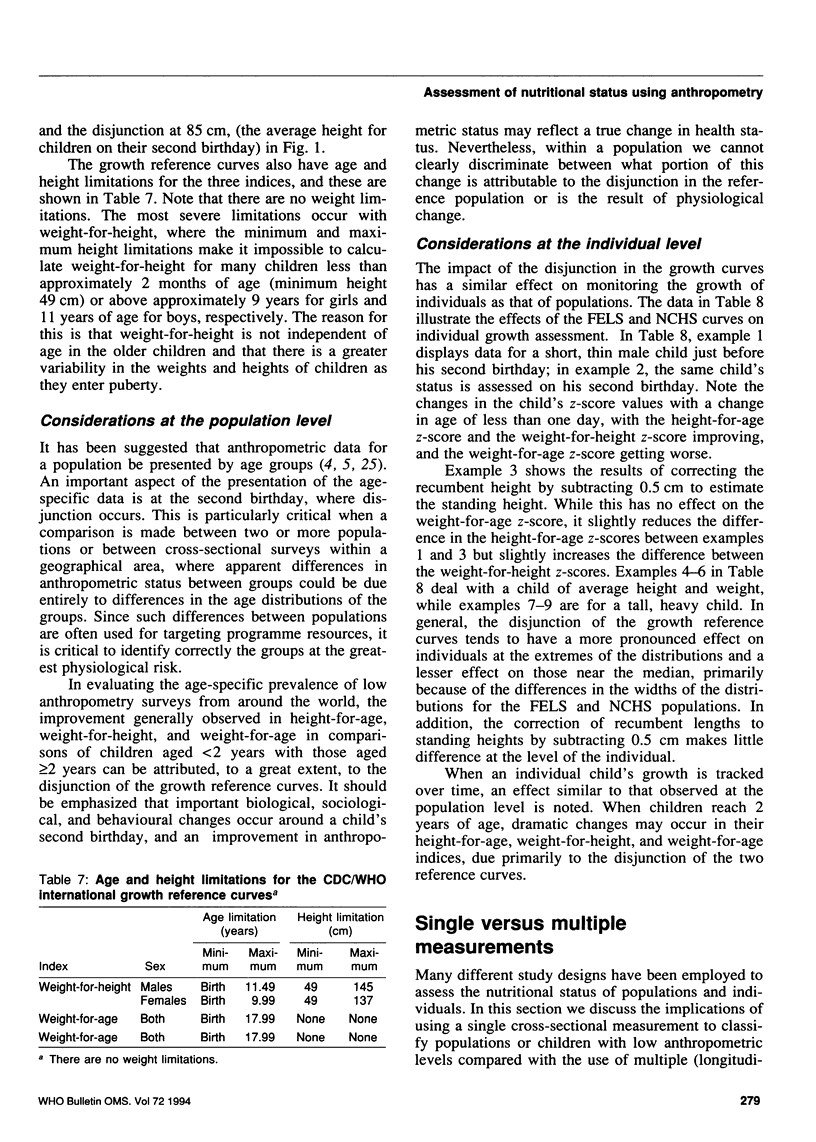

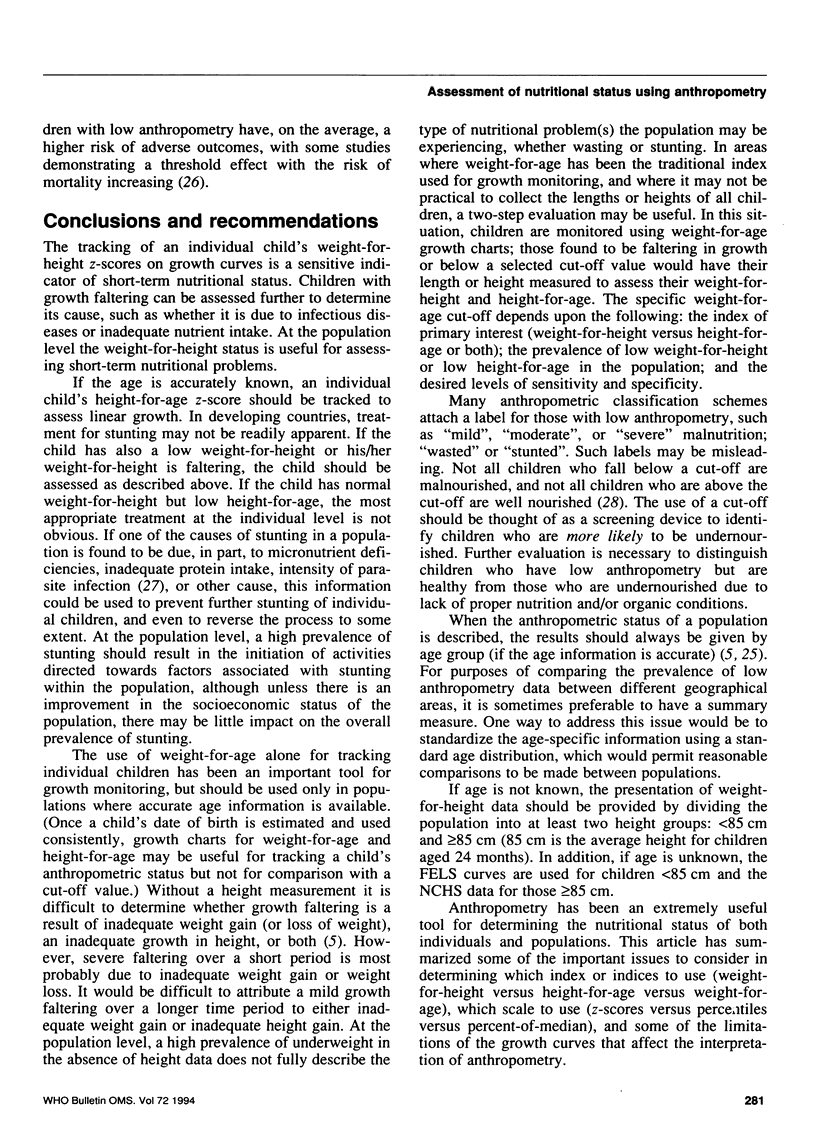


Selected References
These references are in PubMed. This may not be the complete list of references from this article.
- Binkin N. J., Yip R., Fleshood L., Trowbridge F. L. Birth weight and childhood growth. Pediatrics. 1988 Dec;82(6):828–834. [PubMed] [Google Scholar]
- Centers for Disease Control (CDC) Nutritional assessment of children in drought-affected areas--Haiti, 1990. MMWR Morb Mortal Wkly Rep. 1991 Apr 5;40(13):222–225. [PubMed] [Google Scholar]
- Dibley M. J., Goldsby J. B., Staehling N. W., Trowbridge F. L. Development of normalized curves for the international growth reference: historical and technical considerations. Am J Clin Nutr. 1987 Nov;46(5):736–748. doi: 10.1093/ajcn/46.5.736. [DOI] [PubMed] [Google Scholar]
- Dibley M. J., Staehling N., Nieburg P., Trowbridge F. L. Interpretation of Z-score anthropometric indicators derived from the international growth reference. Am J Clin Nutr. 1987 Nov;46(5):749–762. doi: 10.1093/ajcn/46.5.749. [DOI] [PubMed] [Google Scholar]
- Gorstein J. Assessment of nutritional status: effects of different methods to determine age on the classification of undernutrition. Bull World Health Organ. 1989;67(2):143–150. [PMC free article] [PubMed] [Google Scholar]
- Kramer M. S. Determinants of low birth weight: methodological assessment and meta-analysis. Bull World Health Organ. 1987;65(5):663–737. [PMC free article] [PubMed] [Google Scholar]
- Leon M. E., Serdula M., Williamson D. F., Nieburg P., Sullivan K., Boring J. R. Identifying the malnourished within Peru: regional variation in the performance of a nutrition indicator. Int J Epidemiol. 1990 Mar;19(1):214–216. doi: 10.1093/ije/19.1.214. [DOI] [PubMed] [Google Scholar]
- Mora J. O. A new method for estimating a standardized prevalence of child malnutrition from anthropometric indicators. Bull World Health Organ. 1989;67(2):133–142. [PMC free article] [PubMed] [Google Scholar]
- Sullivan K., Trowbridge F., Gorstein J., Pradilla A. Growth references. Lancet. 1991 Jun 8;337(8754):1420–1421. doi: 10.1016/0140-6736(91)93113-n. [DOI] [PubMed] [Google Scholar]
- Toole M. J., Waldman R. J. Prevention of excess mortality in refugee and displaced populations in developing countries. JAMA. 1990 Jun 27;263(24):3296–3302. [PubMed] [Google Scholar]
- Trowbridge F. L. Clinical and biochemical characteristics associated with anthropometric nutritional categories. Am J Clin Nutr. 1979 Apr;32(4):758–766. doi: 10.1093/ajcn/32.4.758. [DOI] [PubMed] [Google Scholar]
- Victora C. G. The association between wasting and stunting: an international perspective. J Nutr. 1992 May;122(5):1105–1110. doi: 10.1093/jn/122.5.1105. [DOI] [PubMed] [Google Scholar]
- Waterlow J. C., Buzina R., Keller W., Lane J. M., Nichaman M. Z., Tanner J. M. The presentation and use of height and weight data for comparing the nutritional status of groups of children under the age of 10 years. Bull World Health Organ. 1977;55(4):489–498. [PMC free article] [PubMed] [Google Scholar]
- de Lima e Costa M. F., Leite M. L., Rocha R. S., de Almeida Magalhães M. H., Katz N. Anthropometric measures in relation to Schistosomiasis mansoni and socioeconomic variables. Int J Epidemiol. 1988 Dec;17(4):880–886. doi: 10.1093/ije/17.4.880. [DOI] [PubMed] [Google Scholar]
- de Onís M., Monteiro C., Akré J., Glugston G. The worldwide magnitude of protein-energy malnutrition: an overview from the WHO Global Database on Child Growth. Bull World Health Organ. 1993;71(6):703–712. [PMC free article] [PubMed] [Google Scholar]


